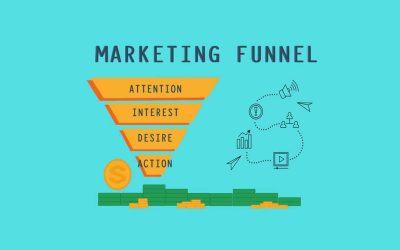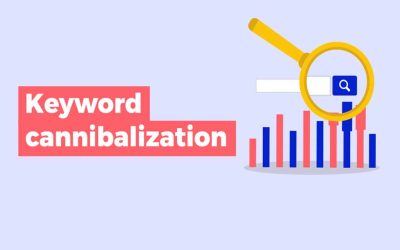Simplified Technical Terms! (Techie terms explained)
Is it possible that you’ve reached a point where you’re looking for a new website for your company, website but are intimidated to speak with a web developer because you don’t comprehend all of the “tech talk”? Never fear, here’s my Simplified Technical Terms! (Techie terms explained)
Believe me you are not alone in your feelings.
It’s a wise business decision to start a website or invest in online marketing for your company. However, I understand that finding the appropriate individual for the job can be extremely tough, especially if you aren’t familiar with all of the jargon.
“SEO…domain names…hosting…website platforms…” are just a few of the terms that come to mind.
It can be a little over the top.
In addition, while you may have confidence in your webmaster, you still want to know more about what they are doing with your money in order to assist you in growing your online business.
These terminologies, like any other subject, can be thoroughly discussed. But let us simplify things so you can grasp the main concept the next time it’s brought up in discussion!
Below are some of the most regularly used “tech words” in website design and search engine optimization, simplified down into simple language that anyone can understand.
Optimization for Search Engines (SEO):
Improve your website so that relevant search terms can lead people to it on search engines (such as Google) (keywords).
Backlink:
Inbound links (also known as backlinks) are usually links to your website that point to another website and direct users to your website. Backlinks from relevant and authoritative websites might be quite beneficial to your SEO efforts.
Keywords:
People locate your services by searching for them on search engines such as Google. If you are a landscaper, for example, frequent keywords used to identify landscapers in your region including “lawn care service,” or “landscapers near me,” “lawn maintenance,” and “lawn mowing.”
It is crucial to research the most popular keywords so that you can use them to attract more people while they search for you or your services online.
Hosting :
A web hosting space that you may buy or rent to host your website files and database online. Your website’s files are stored on your “hosting platform” (including site information, images, code, etc.). With this in mind, having a secure hosting space for your website is critical!
Domain:
Your website’s “address” on the internet. The domain name, like your address, tells people where they can find you online. Www.philreinhardt.com is an excellent example of a domain name.
Domain Name Provider:
This is the company from which you will purchase your domain name. Godaddy.com and Namecheap.com are two well-known domain name providers. Certain website-building platforms, such as Wix or Squarespace, also sell domain names.
My recommendation: I have noticed that Namecheap.com has the greatest pricing and is very straightforward to connect to your website.
URL:
Unresolved resource locator (URL) is the internet address for a single webpage or file. For example, on my website, I have a home page, a “services” page, a “blog” page, and a “contact” page, among other things. Each of these pages is identified by a unique URL.
www.philreinhardt.com/blog is an excellent example of a URL.
Platforms:
Website building platforms make the process of creating a website more accessible. You have probably heard of Wix, Squarespace, Weebly, and WordPress, to name a few. These are all “apps” or platforms.
Mobile-Friendly:
This simply signifies that your website is mobile-friendly. Because more people browse the web on their phones than on their laptops or desktop computers these days, it is critical for websites to be mobile-friendly. Really means that your website will auto-adjust itself to look good on any device, no matter the screen size.
Citations:
A traffic ticket is a horrible thing. For SEO purposes, citations are beneficial. A citation is referred to an online reference to your business that includes your company’s name, address, and phone number (or NAP). Are you familiar with the Yellow Pages? It’s the same thing, but it’s all done online. The more internet citations your business has, the more likely people are to find it! A great example would be a Google My Business Page, or a Yelp Page. Even a Facebook business page or a LinkedIn Business Page.
E-Commerce:
A web-based shop. If you sell things directly from your website, you have an e-commerce website. Usually, e-commerce sites have cart systems.
Conversion:
When a website is made to convert, it is intended for visitors to take action. It may be completing them to complete a form, or to call your firm to arrange an appointment or any other goal you have for visitors to your website. Once the visitor completes the “desired action” you are hoping they will do, that would be a “conversion”.
GMB:
Google My Business is a Google service that allows you to manage your business. Google offers a free business listing. Again, this is a business citation, as explained above. Make certain you set one up.
Content:
The complete information is found on your website. This contains any written material about your company, as well as your logo, photographs, contact information, blog articles, video, and so on.
Google Page Rank:
The position in which your website appears when a search for relevant keywords is conducted by Google.
It is not necessary to be familiar with all of the technical terms mentioned above. You engaged an expert to advise you on these matters. However, I hope it will assist you in understanding the fundamentals of what these frequently used website-building jargons signify, allowing you to feel more confident in the work being done to improve your company’s online presence in the future.




